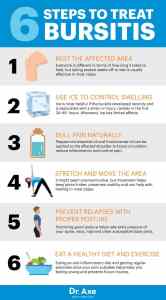What is hip bursitis?
Hip bursitis, also called trochanteric bursitis, affects many people every day. It is characterized by pain and/or stiffness in the hip which is worsened with pressure, and potentially redness and swelling. The pain is caused by inflammation of the fluid-filled sacs, called bursae, which cushion the bones, tendons, and muscles near your joints. Normally part of a cushioning system to ease joint movements, inflamed bursae can make moving quite painful.
The hip is the largest and highest weight-bearing joint in the body, so it’s no wonder inflammation can occur around it. Where the femur (upper leg bone) meets the pelvis, a ball-and-socket joint sits which gives you your range of motion in your hip. It is held in place by large ligaments, muscles, and tendons, and coated in thick cartilage to make your everyday motions easy, and pain-free. However, problems such as trochanteric bursitis can arise and make movements quite painful. Inflamed bursae are further irritated by any hip movements around them, making hip bursitis a debilitating condition, especially for those who are physically active.
What causes trochanteric bursitis?
The most common cause of trochanteric bursitis is repetitive, often high-intensity movements. These are often things such as running, cycling, stair climbing, or standing for long periods of time. These repetitive movements over time can cause inflammation in the bursa of the hip. Runners are at great risk of developing trochanteric bursitis.
Injuries can also cause hip bursitis. A fall, for example, can cause your hip to take a hard hit. The trauma and force of the fall can cause the bursa to swell. A ripped tendon from a fall or overuse injury can cause inflammation in the bursa sacs. Lying on your side for extended periods, particularly side sleeping, can put pressure on the bursae, causing trochanteric bursitis to occur. Hip surgery, such as hip replacement with a prosthetic joint, can cause temporary bursitis as part of the post-operative recovery process. Be sure to follow your surgeons’ instructions for post-surgical care.
Trochanteric bursitis can be a secondary condition to a preexisting disease, such as rheumatoid arthritis and gout. The flare-up of these inflammatory diseases can cause irritation and inflammation in the bursae of the hip if they are affecting the surrounding area.
What are the symptoms of trochanteric bursitis?
The main symptom of trochanteric bursitis is pain in the outer hip area. This pain is often worsened by putting pressure or lying on the painful hip. Furthermore, the pain will be worsened by walking, running, or any other movement of the hip. Initially, the pain may be very sharp but will lessen to more of a chronic ache. The affected leg may also show some swelling, with heat or redness near the site of the pain as a possibility.
Some symptoms may be more severe and require the intervention of a medical specialist. If you experience sudden, severe, debilitating pain, particularly that shoots down your leg, sudden inability to move your joint, or a fever with your pain, you should consult your primary care provider immediately. They will be able to refer you to your next course of action.
Physical Therapy for Treatment of Hip Bursitis
Developing hip bursitis is not the end of your running or cycling career. A trained physical therapist can help you develop a plan to improve your strength, range of motion, and posture, and decrease your pain to get you back to your prior level of function. It is very important to heed the advice of your physical therapist and follow your treatment plan as closely as possible to avoid further injury or re-injury. Contact Cawley Physical Therapy and Rehabilitation (570-208-2787) for an individualized plan specifically targeted towards your case of trochanteric bursitis.
Moving forward, your physical therapist will also be able to help you with any future problems. You can consult with them and learn how to prevent any further injuries based on your current daily activity level. Avoid repeat flare-ups and learn how to utilize proper posture and ergonomic techniques while at work or play, ensuring your safety and a pain-free future.

– Dr. Jesse Yurko DPT
Looking for Relief today?? Click below to sign up for one of our limited Free Discovery Visits!



